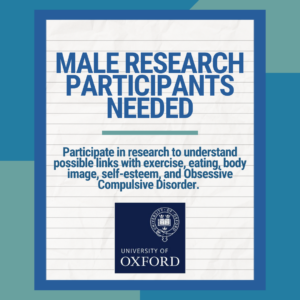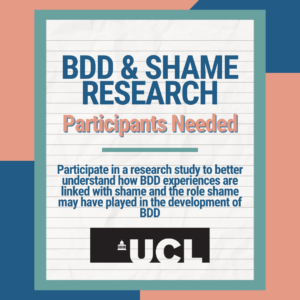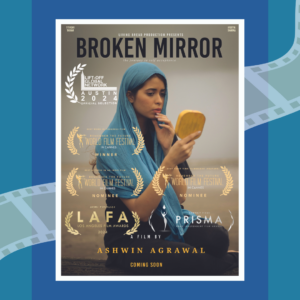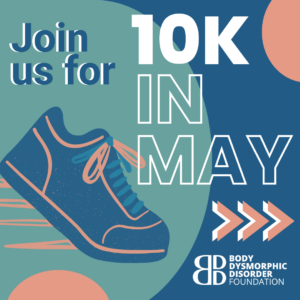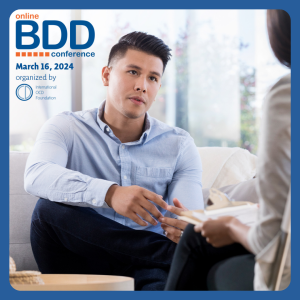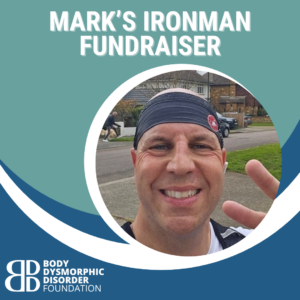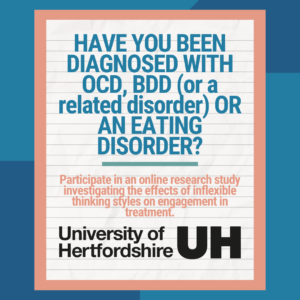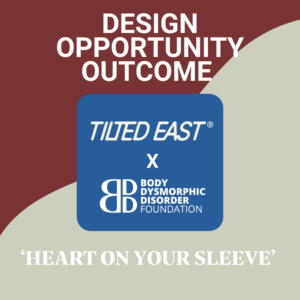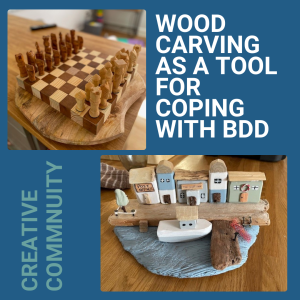I have learnt from experience that a wave of peacefulness washes over me after I have successfully reduced or eliminated a ritual. Of course, at first it was hard and anxiety-provoking. But when I really kicked the trick, my internal fires died out.
I would like to share my experience. Forgive me if I give advice or offend; I’m quite passionate about my recovery and want to share with you my sense of hope. I did not realise that my Body Dysmorphic Disorder had gradually changed me into someone that I didn’t want to be. A person who was at odds with himself and his fellow man. I picked my skin until I gave myself scars, then I stayed in my room to pick at the scars rather than go outside the house with family or friends. One of the things I used to do was to keep looking at my scars in the mirror until they became out of focus, as my eyes grew tired. Gazing from different angles and not wanting to blink, I was drawn to the things that I hated and it caused me a lot of distress. It felt as if the mirror would drag me towards it and scream ugly names at me. Later I tried to remove the scars with unnecessary surgery, which only caused larger and redder scars.
I had painful steroid injections into the scar tissue to try to soften them. I had laser surgeries to try to reduce their redness. I filed my own teeth with a razor to try to make them even. I dreamt incessantly of nose surgery. I thought my arm and leg hair was ugly and dirty and tried to cover it up. I saw uneven ears, uneven nostrils, over-developed muscles on one side of my forehead, to name just a few of my ‘flaws’. And that’s not even going into the rituals and tricks that took up hours of my day in an effort to camouflage.
“I thought I didn’t deserve love, but punishment”
For many years I tried to keep people from knowing about my pain and my negative thoughts. I isolated myself, and lived in a prison of my own making. I avoided intimate relationships for fear of rejection because of my defects. If I felt rejected I put it down to the way I looked. I thought I didn’t deserve love, but punishment. I told myself no one would love me because of these ugly, grotesque parts of my appearance. In my head I went over every conversation, every social interaction, trying to account for my feelings of rejection. I was trying to use my insight, not realising that my insight was distorted. Later I came to realise that, unknowingly, I was using my ‘insight’ to keep myself stuck.
My BDD was a destructive force in my life. My best efforts resulted in ever-greater destruction and despair. At some point I realised that I needed the help of professionals. With therapy I came to realise that holding on to these rituals, tricks, safety behaviours and obsessions would eventually sicken me and stop me from taking part in a new way of life. I realised that if I kept entertaining these obsessive thoughts it would lead me to a worse state. I have learnt that if I let an obsessive thought surge, it maintains its own momentum, until it boggles my mind and alters my mood. It is the old, unhealthy mindset that BDD is preserving.
“Many of us with BDD cling to our fears, doubts, self-loathing or hatred because there is a certain security in our pain”
How sincerely I worked at each Cognitive Behavioural Exposure exercise (or what I term a recovery step). My effort was proportionate to my desire for change. And this next part was an important one for me: for a long time it didn’t seem safe to embrace what I now knew, and to let go of the familiar for the unknown. Many of us with BDD cling to our fears, doubts, self-loathing or hatred because there is a certain security in our pain. But I started to liken my behaviour to that of an addict, and I realised that each ritual starts the deadly cycle all over again. Drug addicts try to control their addictions, to ‘use in moderation’ or to use just ‘certain drugs’. None of these control methods work. I too had to admit my powerlessness over my rituals. I couldn’t substitute one ritual for another. I couldn’t take the view that I could do my rituals in moderation. My therapist gave me a great example: if you have an infected wound and you wipe 90% of the infection away, the infection spreads again.
My therapist told me to view any current or new behaviour in that way. If it was even partly BDD-related, e.g. 20% BDD, and 80% a ‘normal’ appearance concern, then I had to stop doing it because substituting one trick for another was releasing my compulsions all over again. BDD is great for manipulating the truth. BDD is always a step ahead. I said to my therapist: yes, I need help, yes, I am willing to do whatever it takes to stop my rituals/tricks, but in the back of my mind I was like an addict, telling myself that ‘when’ I get my life together, then I can handle my drug habits. Or, ‘when’ I get out of rehab, I can handle the occasional drug. Such ways of thinking and acting lead us back to what Narcotics Anonymous call ‘active addiction’.
I came to realise that I had no choice except to completely change my old ways of thinking. From that point forward I began to see that every ritual-free day is a successful day, no matter what happens. Surrender means not having to fight anymore. We accept life the way it is. We become willing to do whatever it takes to stay ritual-free, even things we don’t like doing. I had to learn, and did learn, that I was growing when I made new mistakes instead of repeating old ones. I came to know myself through therapy. I found myself growing into a mature consciousness. I began to feel better, as willingness grew into hope. For the first time I could see my new life. With this in sight, I put my willingness into action, and that brought results. I examined my actions during the day. Writing them down helped. I could ask myself whether I was being drawn into old BDD patterns of fear. That way I could see if I was setting myself up for trouble.
I have come to realise that when someone points out a shortcoming in me, my first reaction doesn’t have to be defensive. I have had to realise, and do realise through recovery, that it is okay to have some not-so-great things about you. In appearance or otherwise, it is okay! Some parts of yourself might be a work in progress; other parts have to be lived with. But constantly thinking about changing a defect keeps the crazy thoughts going.
My recovery from BDD involved much more than simple abstinence from BDD tricks. If we had problems in the past, it is unlikely that simple abstinence will solve our problems. The recovery process involves an active change in our ideas and attitudes; attacking our ‘cognitive distortions’ such as catastrophising, mind-reading, disqualifying the positive, etc. We need to face up to our problems in order to stop the preoccupations which lie at the core of our disorder. If we allow ourselves to plateau and cling to ‘fatal’ safety behaviours, we are giving into the symptoms of our disorder. Continually ask yourself: would I be doing this if I didn’t have BDD?
Moreover, don’t let BDD dictate what you do or don’t do. I had to learn new ways to live, to replace old BDD habits with new ways of living. I have learnt from experience that a wave of peacefulness washes over me after I have successfully reduced or eliminated a ritual. Of course, at first it was hard and anxiety-provoking. But when I really kicked the trick, my internal fires died out. That which opposed me was less troubling, maybe even gone. I no longer feel the need to struggle today. Trusting that relief awaits me insures its arrival. Amelia Earhart said, ‘Courage is the price that life exacts for granting peace’. I am starting to be spirit-filled and I get the feeling my greatest contributions will be discovered now that my BDD has taken a rest. Our creativity awaits our discovery; we just have to release it from the clutches of our BDD.
More stories from the community
